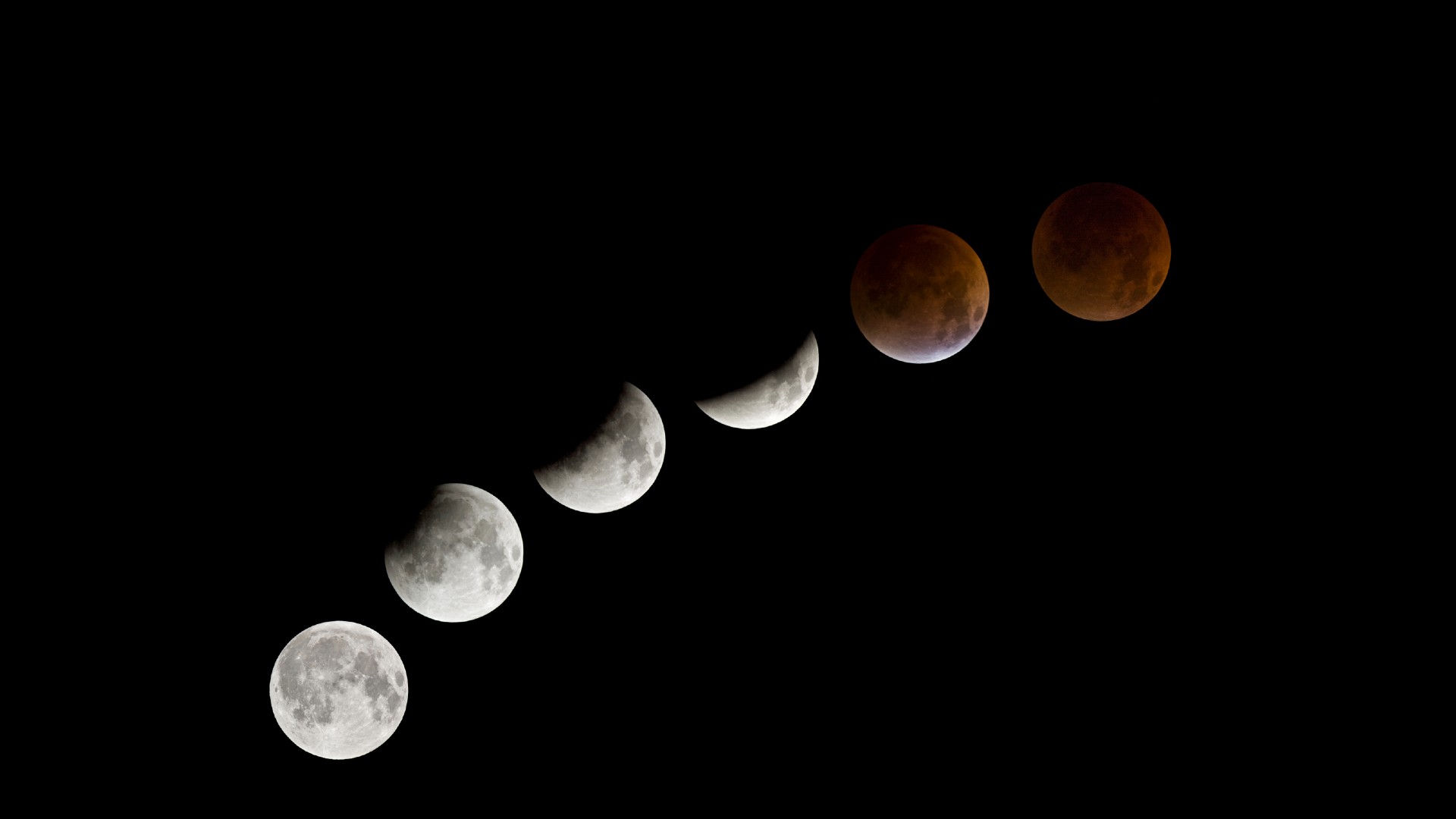
The next full moon on the calendar after this month's October 9th Hunter's Moon comes on November 8th. In addition, there will be a bonus that day: A total eclipse of the moon.
For viewers in the Americas, this shady drama will happen in the early morning hours of Tuesday, Nov. 8. Along the Atlantic Seaboard the moon's entrance into the dark umbral shadow of Earth will occur about an hour before dawn breaks. Along the Pacific Coast, first contact with the umbra comes just over an hour after midnight with the moon just past its highest point in the sky.
It is not too early to begin making preparations for viewing next month's total lunar eclipse. One of things to consider is the moon's location in the sky during the eclipse. For those who live along the East Coast of the U.S. and Canada this will be an important factor, since initially the eclipse will be descending from a point about one-quarter up in the western sky. Will tall trees or nearby buildings block your view of the moon?
Related: Lunar eclipses 2022: When, where & how to see them

Looking for a telescope for the lunar eclipse? We recommend the Celestron Astro Fi 102 as the top pick in our best beginner's telescope guide.
You can get a very good idea about where the moon will be in the sky during the eclipse by looking for it on Tuesday morning, Oct. 11.
On that day, the moon — 1.5 days past full — will be very near (within a couple of degrees) to that region of the sky where it will also be on the morning of November 8th for the eclipse. On the morning of Oct. 11, if you check the times given in the table below, the moon will appear in the sky very close to where it will be during the actual eclipse on Nov. 8.
| Row 0 - Cell 0 | EDT | CDT | MDT | PDT |
| Eclipse begins | 6:24 a.m. | 5:24 a.m. | 4:24 a.m. | 3:24 a.m. |
| Totality begins | 7:30 a.m. | 6:30 a.m. | 5:30 a.m. | 4:30 a.m. |
| Totality ends | Moon below horizon | 7:55 a.m. | 6:55 a.m. | 5:55 a.m. |
| Eclipse ends | Moon below horizon | Moon below horizon | 8:03 a.m. | 7:03 a.m. |
For example: on Nov. 8th, for an observer in New York, the total phase of the eclipse will begin at 5:16 a.m. At that moment, the moon will stand 13 degrees above the horizon, 9 degrees north of due west. (Your clenched fist held at arm's length is roughly equal to 10 degrees.) Now, look at the above table. Notice that the corresponding time for the beginning of the total phase is 7:30 a.m. on Oct. 11. Step outside at that moment and you'll be able to get a fairly good approximation of where the moon will be for New Yorkers on Nov. 8 when totality begins.
Get the Space.com Newsletter
Breaking space news, the latest updates on rocket launches, skywatching events and more!
Incidentally, on Oct. 11, it will be daytime, however, the moon should still be readily visible against the blue daylight sky. In contrast, on Nov. 8, the sky will be much darker, the break of dawn having occurred about a quarter hour earlier.
This method will be especially helpful for those near and along the East Coast who might want to determine where the moon will be relative to their local horizon (and local landmarks) as it sets on eclipse morning.
Space.com will be providing more details about the Nov. 8 lunar eclipse early next month, so stay tuned!
Joe Rao serves as an instructor and guest lecturer at New York's Hayden Planetarium. He writes about astronomy for Natural History magazine, the Farmers' Almanac and other publications. Follow us on Twitter @Spacedotcom and on Facebook.
Join our Space Forums to keep talking space on the latest missions, night sky and more! And if you have a news tip, correction or comment, let us know at: community@space.com.

Joe Rao is Space.com's skywatching columnist, as well as a veteran meteorologist and eclipse chaser who also serves as an instructor and guest lecturer at New York's Hayden Planetarium. He writes about astronomy for Natural History magazine, Sky & Telescope and other publications. Joe is an 8-time Emmy-nominated meteorologist who served the Putnam Valley region of New York for over 21 years. You can find him on Twitter and YouTube tracking lunar and solar eclipses, meteor showers and more. To find out Joe's latest project, visit him on Twitter.









